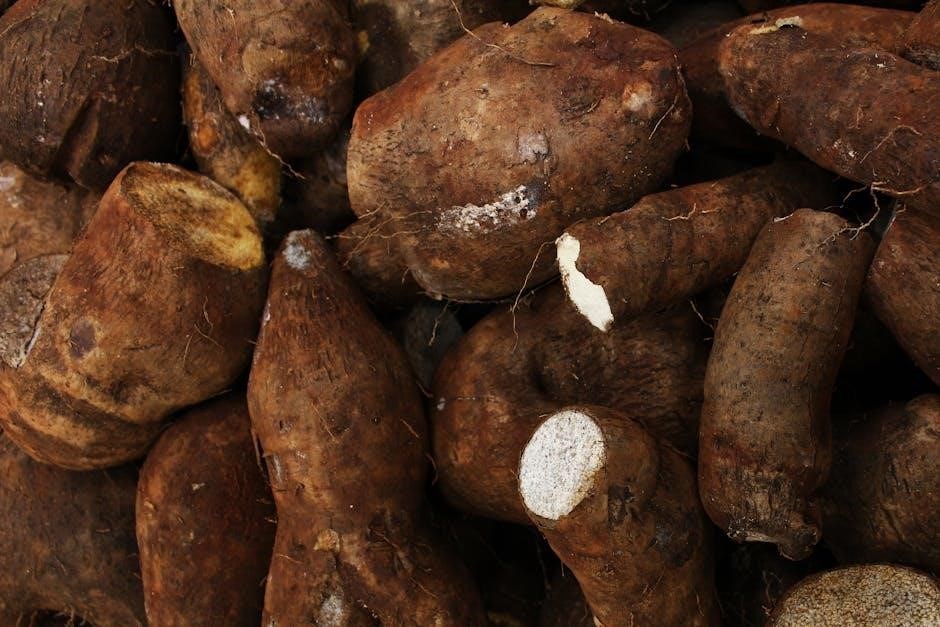Resistant Starch Foods: A Comprehensive List
Discover a wealth of food choices rich in resistant starch, which plays a critical role in human health. These include legumes like beans, lentils, chickpeas, and barley. Also, buckwheat, cooked and cooled potatoes, and certain breakfast cereals are also included. Learn more about incorporating resistant starch into your diet.
What is Resistant Starch?
Resistant starch (RS) is a type of starch that resists digestion in the small intestine. Unlike other starches that are broken down into glucose and absorbed, resistant starch passes through to the large intestine relatively unchanged. Here, it acts as a prebiotic, feeding beneficial gut bacteria. This fermentation process produces short-chain fatty acids (SCFAs), such as butyrate, which have numerous health benefits.
Resistant starch is found naturally in various foods, including grains, seeds, legumes, and some starchy vegetables. It can also be formed when certain starchy foods are cooked and then cooled, a process that alters the starch’s molecular structure. Additionally, resistant starch can be added to processed foods to increase their fiber content and improve their nutritional profile. Understanding resistant starch is crucial for optimizing gut health, blood sugar control, and overall well-being. Its unique properties make it a valuable component of a balanced diet. Including resistant starch in your diet can lead to improved digestive function and better metabolic health.

Types of Resistant Starch (RS1, RS2, RS3, RS4)
Resistant starch is classified into four main types, each with distinct characteristics and sources. RS1 is physically inaccessible starch, found in whole grains, seeds, and legumes. Its digestion is hindered by the fibrous cell walls surrounding the starch granules. RS2 is native granular starch, present in raw potatoes, green bananas, and high-amylose corn. Its crystalline structure makes it resistant to enzymatic breakdown.
RS3, also known as retrograded starch, forms when cooked starchy foods like potatoes and rice are cooled. This process alters the starch molecules, creating a structure that is less digestible. RS4 is chemically modified starch, added to processed foods to increase fiber content and improve texture. This type is synthesized through chemical reactions that alter the starch’s structure, making it resistant to digestion.
Understanding these different types of resistant starch is essential for optimizing dietary intake and maximizing health benefits. Each type offers unique properties and contributes differently to gut health and metabolic function.
Foods Naturally High in Resistant Starch
Many natural foods are excellent sources of resistant starch, contributing to gut health and overall well-being. Legumes, including beans, lentils, and chickpeas, are particularly rich in resistant starch, providing a substantial amount per serving. Grains like barley and buckwheat also offer significant levels of resistant starch, especially when consumed whole.
Tubers, such as potatoes, are another valuable source, especially when cooked and then cooled, which increases their resistant starch content. Unripe bananas contain a high amount of resistant starch in the form of RS2, while the starch content decreases as they ripen.
Additionally, certain seeds and nuts contain resistant starch, although typically in smaller quantities compared to legumes and grains. Incorporating a variety of these foods into your diet can help increase your intake of resistant starch, promoting a healthy gut microbiome and improving blood sugar control. These natural sources offer a delicious and nutritious way to enhance your diet with this beneficial carbohydrate.
Legumes: Beans, Lentils, and Chickpeas
Legumes, including beans, lentils, and chickpeas, are nutritional powerhouses celebrated for their high resistant starch content. These foods are excellent sources of fiber, protein, and various essential nutrients, making them a valuable addition to any diet. Beans such as black beans, kidney beans, and navy beans are particularly rich in resistant starch, offering a substantial amount per serving.
Lentils, another versatile legume, also provide a significant dose of resistant starch, contributing to improved gut health and blood sugar control. Chickpeas, also known as garbanzo beans, are equally beneficial, offering a combination of resistant starch, fiber, and protein.
The resistant starch in legumes acts as a prebiotic, feeding beneficial gut bacteria and promoting a healthy digestive system. Incorporating legumes into your meals can help improve insulin sensitivity, lower blood sugar levels, and reduce appetite. Enjoy them in soups, salads, stews, or as a side dish to reap their numerous health benefits.
Grains: Barley and Buckwheat
Grains such as barley and buckwheat stand out as valuable sources of resistant starch, offering a range of health benefits when incorporated into your diet. Barley, a versatile grain, contains a notable amount of resistant starch, particularly when consumed whole. This resistant starch contributes to improved gut health by promoting the growth of beneficial bacteria in the colon.
Buckwheat, though often mistaken for a grain, is actually a seed and is naturally gluten-free. It boasts a significant resistant starch content, making it an excellent choice for those seeking to enhance their digestive health and manage blood sugar levels.
The resistant starch found in barley and buckwheat resists digestion in the small intestine, reaching the colon where it is fermented by gut bacteria. This fermentation process produces short-chain fatty acids (SCFAs), such as butyrate, which have anti-inflammatory properties and support overall gut health. Including barley and buckwheat in your meals can help regulate blood sugar, improve insulin sensitivity, and contribute to a balanced and healthy diet.
Tubers: Potatoes (especially cooked and cooled)
Potatoes, particularly when cooked and cooled, are a significant source of resistant starch. The cooking and cooling process transforms some of the digestible starches into resistant starch, enhancing their health benefits. When potatoes are cooked, their starch granules swell and gelatinize, making them easier to digest. However, upon cooling, a process called retrogradation occurs, where some of the starch molecules realign and form a structure that is resistant to digestion.
This resistant starch acts similarly to dietary fiber, passing through the small intestine undigested and reaching the colon, where it is fermented by gut bacteria. This fermentation process promotes the growth of beneficial bacteria and produces short-chain fatty acids (SCFAs) like butyrate, which supports gut health and reduces inflammation.
Consuming cooked and cooled potatoes can aid in blood sugar control, improve insulin sensitivity, and contribute to overall metabolic health. Potato salad, made with cooked and cooled potatoes, is a delicious way to increase your intake of resistant starch.
Breakfast Cereals and Snack Foods
Breakfast cereals and snack foods can contribute to your resistant starch intake, though the amount varies greatly depending on the specific product. Certain breakfast cereals, particularly those made from whole grains like corn flakes, contain resistant starch. The processing methods used in manufacturing these cereals can influence the amount of resistant starch present. Look for cereals with minimal processing and higher fiber content to maximize the benefits.
Snack foods such as breads, cookies, muffins, pizza crust, tortillas, and snack products may also contain resistant starch, especially if they are made with ingredients like whole grains or modified starches. Some manufacturers add resistant starch to processed foods to increase their fiber content and improve their nutritional profile.
When choosing breakfast cereals and snack foods, it’s essential to read the nutrition labels carefully. Opt for products that are high in fiber and low in added sugars and processed ingredients. By making informed choices, you can incorporate these foods into a balanced diet and increase your resistant starch consumption.
The Role of Cooking and Cooling in Increasing Resistant Starch
The process of cooking and cooling certain starchy foods significantly impacts their resistant starch content. When foods like potatoes, rice, and pasta are cooked, the starch molecules absorb water and gelatinize. This process makes the starch easier to digest. However, when these cooked foods are then cooled, a portion of the digestible starch retrogrades, transforming into resistant starch.
Retrogradation is the process where starch molecules realign themselves, forming a more ordered structure that is resistant to digestion. This means that the cooled starch passes through the small intestine relatively unchanged, acting more like dietary fiber. The amount of resistant starch formed during cooling depends on several factors, including the type of starch, the cooking method, and the cooling temperature and duration.

Therefore, enjoying foods like potato salad or pasta salad that have been cooked and then cooled is an effective way to increase your resistant starch intake. This simple dietary strategy can contribute to improved gut health and blood sugar control.
Resistant Starch Content of Cassava Products

Cassava, a starchy root vegetable widely consumed in many parts of the world, offers varying levels of resistant starch depending on its processing and preparation methods. While some studies indicate that raw cassava contains a moderate amount of resistant starch, the cooking process generally reduces this content by gelatinizing the starch.
However, certain cassava products, such as tapioca and sago, have been found to retain some resistant starch, with levels ranging from 0.56 to 1.1 percent. These products can be considered a source of resistant starch, although not as significant as other foods like legumes or cooked and cooled potatoes.
The resistant starch content in cassava products can also be influenced by factors such as the variety of cassava used and the specific processing techniques employed. Traditional methods of food preparation that involve minimal processing may help preserve a higher proportion of resistant starch in the final product. While not a primary source, cassava products contribute to overall resistant starch intake.
Resistant Starch Added to Processed Foods (RS4)
Resistant Starch Type 4 (RS4) refers to chemically modified starches added to processed foods to increase their fiber content and improve their nutritional profile. Unlike naturally occurring resistant starches, RS4 is created through industrial processes that alter the starch molecule, making it resistant to digestion.
Food manufacturers incorporate RS4 into a wide range of products, including breads, cookies, muffins, pizza crusts, tortillas, breakfast cereals, and snack foods. The addition of RS4 enhances the fiber content of these items, providing consumers with potential health benefits such as improved blood sugar control and enhanced gut health.
However, it’s essential to note that not all RS4 starches are created equal, and their impact on health can vary depending on the specific modification process and the amount added to the food. Consumers should carefully read food labels to understand the type and quantity of resistant starch present in processed foods.
Health Benefits of Resistant Starch
Resistant starch (RS) offers several health benefits, primarily due to its unique properties as a dietary fiber-like substance that resists digestion in the small intestine. This resistance allows RS to reach the large intestine, where it is fermented by gut microbiota, producing beneficial short-chain fatty acids (SCFAs) like butyrate.
Butyrate, in particular, is a key energy source for colon cells and plays a crucial role in maintaining gut health and reducing the risk of colon cancer. RS has been shown to improve insulin sensitivity, potentially aiding in blood sugar control and reducing the risk of type 2 diabetes. It may also contribute to weight management by promoting satiety and reducing caloric intake.
Furthermore, RS can positively influence cholesterol levels and mineral absorption. Incorporating RS-rich foods into your diet may support overall well-being by promoting a healthy gut microbiome and improving metabolic functions. These advantages make resistant starch a valuable component of a balanced diet.
Resistant Starch and Gut Health (Prebiotic Effects)
Resistant starch (RS) exerts significant prebiotic effects, profoundly influencing gut health by acting as a food source for beneficial gut bacteria. Unlike regular starches, RS resists digestion in the small intestine, allowing it to reach the colon, where it undergoes fermentation by the resident microbiota. This fermentation process produces short-chain fatty acids (SCFAs), such as butyrate, acetate, and propionate, which are crucial for maintaining gut health.
Butyrate, in particular, serves as a primary energy source for colonocytes, promoting their growth and function. Additionally, SCFAs help to lower the pH in the colon, creating an environment that inhibits the growth of pathogenic bacteria while fostering the proliferation of beneficial species.
By selectively nourishing beneficial bacteria, RS contributes to a more balanced and diverse gut microbiome, which is essential for optimal digestive function, immune regulation, and overall well-being. The prebiotic effects of resistant starch make it a valuable dietary component for supporting a healthy gut ecosystem.
Resistant Starch and Blood Sugar Control

Resistant starch (RS) plays a significant role in blood sugar control due to its unique digestion-resistant properties. Unlike readily digestible starches that cause rapid glucose spikes, RS resists digestion in the small intestine, slowing down the release of glucose into the bloodstream. This slower glucose release helps to stabilize blood sugar levels, preventing drastic fluctuations that can be detrimental to health.
By reducing postprandial glucose excursions, RS can improve insulin sensitivity, allowing cells to respond more effectively to insulin and utilize glucose more efficiently. This is particularly beneficial for individuals with insulin resistance or type 2 diabetes.
Moreover, the fermentation of RS in the colon produces short-chain fatty acids (SCFAs), which have been shown to further enhance insulin sensitivity and improve glucose metabolism. SCFAs can influence glucose homeostasis by modulating gene expression and signaling pathways involved in glucose uptake and utilization. Overall, the inclusion of RS-rich foods in the diet can contribute to better blood sugar management.
